GAPS – Gut and Physiology/Psychology Syndrome
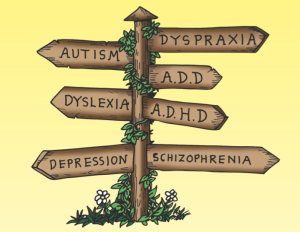 A nutritional program designed to resolve ailments, plus heal the underlying cause. Designed by Dr Campbell McBride whose son was diagnosed with autism. When specialists recommended he be institutionalised for life, she began comprehensive scientific research and designed the GAPS program. On this program he fully recovered – normal schooling, soon going to university. During his recovery Dr Mcbride uncovered the link between digestive health and a wide range of other health issues GAPS may assist with:
A nutritional program designed to resolve ailments, plus heal the underlying cause. Designed by Dr Campbell McBride whose son was diagnosed with autism. When specialists recommended he be institutionalised for life, she began comprehensive scientific research and designed the GAPS program. On this program he fully recovered – normal schooling, soon going to university. During his recovery Dr Mcbride uncovered the link between digestive health and a wide range of other health issues GAPS may assist with:
- Autism Spectrum Disorders – including autism, ADD, ADHD, asperger’s
- Emotional issues ie depression, behavioural issues, food sensitivities ie dairy, wheat
- Digestive issues – ie irritable bowel-IBD, crohns, colitis, indigestion, hemorrhoids, bloating, low blood sugar, reflux, heartburn, overweight, underweight, low metabolism, parasites, constipation, diarrhea, eczema…..
Julie has trained personally with Dr Natasha Campbell McBride ss a certified GAPS nutritional consultant.
New to the GAPS program
We do the following together:
- Discuss the GAPS program to answer questions and understand the process.
- Discuss which of the following are most appropriate for you at the moment
- Gentle transition from the current diet – increasing/decreasing foods that are healing/harmful at the moment. Identifying quantity/frequency of challenging foods that can be tolerated. Moving to health at your pace.
- Commencement of GAPS 6 healing stages
- Commencement of FULL GAPS
- Identify foods that are aggravating symptoms or challenging to digest.
- Recipes to enjoy these foods.
- Identify highly beneficial foods to assist the commencement of healing.
- Identify any specific deficiencies. Many nutritional deficiencies will naturally improve/resolve by improving digestive function.
- Identify beneficial lifestyle improvements.
- Look at non-food complementary remedies, as there are many beneficial healing remedies that have no or very little cost that can significantly assist with physical/emotional healing.
- Discuss sourcing quality foods.
- Look at GAPS essential healing foods. Recipes will also be provided
Already following the GAPS program – tailored personal guidance
Having challenges? Stuck on a particular stage? Unsure how to transition from FULL GAPS back to ‘regular’ food? Unsure what is creating current symptoms or why current symptoms are not improving?
In our sessions, we address:
- Addressing/resolving physical/emotional issues/symptoms
- Identifying the most appropriate stage for you to be currently on
- Foods that your body would prefer to increase/decrease frequency/quantity
- Non-food remedies to support your healing
- Identifying appropriate supplements and dose, if required
Shiatsu Therapy
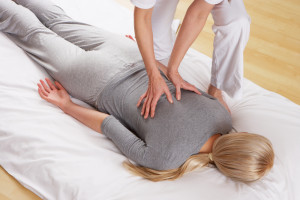 Why is it called Shiatsu Therapy?
Why is it called Shiatsu Therapy?
A Shiatsu therapist is trained very differently to a masseuse who has completed a module in shiatsu massage as part of their massage training. As an Oriental Medicine and Shiatsu Therapist, I am qualified more along the lines of an acupuncturist than a masseuse. Shiatsu therapy – incorporates therapeutic massage – which is similar in essence to acupuncture – however rather pinning a selection of points, Shiatsu massages a selection of points and assists this flow by also incorporating specific massage techniques along the meridians in which these points are located.
Additionally
As a Shiatsu therapist I’m also trained in the following modalities: food as medicine (I’ve also been a college lecturer in this subject), counseling (I’ve pursued this training and now also have a Bachelor degree in counseling), meridian stretches, healing exercises, auricular therapy, chi gong … and many other fascinating subjects.
Shiatsu therapy is a living and evolving therapy. To discern the difference, a Shiatsu therapists is usually a member of the STAA – Shiatsu Therapy Australia Association and trained in an Acupuncture College or a specialist Shiatsu College. A Shiatsu masseuse is trained in many other styles of massage and is usually a member of a general massage association.
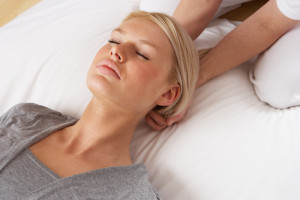 What is a Shiatsu Massage?
What is a Shiatsu Massage?
The word Shiatsu means finger pressure. Shiatsu utilizes acupressure, or pressure points along with other manual therapy techniques, evolved out of 3,500 years of oriental medical wisdom, and is founded upon the same principles as acupuncture, although no needles are used. The traditional theory of acupuncture proposes that energy, known as “Chi” (or “Ki”) moves through the body along defined passageways called meridians. Balance of these energy flows is considered to be essential for health and well-being. A Shiatsu treatment is typically designed with the balancing of these energy flows in mind.
Shiatsu involves applying pressure with fingers, palms, elbows or feet along pressure points (tsubo’s) and meridians, stimulating the body’s innate ability to heal itself. It is exceptionally effective in reducing stress – which assists the body to heal itself.
What is a meridian?
According to traditional Eastern theory, energy (Ki or Qi) circulates in the body along channels called ‘meridians.’ The unobstructed flow of energy through these meridians is essential to good health. When the body is under stress, energy or Ki blockages occur causing physical, emotional, mental discomfort or pain. The Shiatsu therapist identifies these blockages and designs a treatment to restore the flow of this energy and support the body to its natural balance. Every organ in the body has a meridian or path of energy flow, with key points along this energy line.
What are the benefits of Shiatsu?
Shiatsu is used to maintain and restore health. It is also an effective preventative therapy. People of all ages, including babies, children and the elderly can benefit from treatments.
More details about Shiatsu can be found at www.staa.org.au
Reflexology
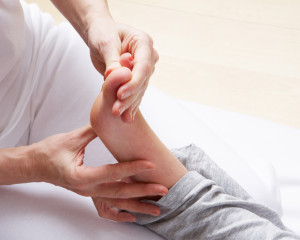
This is a gentle yet deeply therapeutic form of foot massage for all ages from paediatrics to the elderly. For younger children and babies, they can be sitting or lying on a parent’s lap during the massage if preferred. Every organ and system in the body is easily accessed via the feet. The style of reflexology I offer is a little different. It shares the basic precepts with general reflexology, however it is based on Chinese Medicine and incorporates many healing techniques applied simultaneously to the massage. This style of Reflexology integrates beautifully with a shiatsu massage as they are both oriental medicine in origin – the healing, freeing the flow of energy, removing blocks/resistance, energising any deficiencies and allowing balance to be restored.
For example when an organ or system in the body is not functioning fully, the person feels ‘out of sorts’ both emotionally and physically. Prior to the physical problems appearing, there would have been weakness/stress in the body’s organs. To heal the underlying deficiencies, Reflexology strengthens and balances the organs in the relevant system.
Here are a few of the systems and conditions this style of reflexology may help resolve:
- Lymph: boost the immune system, alleviate congestion, swollen ankles, lymphedema, to assist a cleanse/detox ie liver cleanse, heavy metal cleanse, weight loss cleanse.
- Respiratory: sinus, asthma
- Digestive: heartburn/reflux, IBS, bloating, food sensitivities/allergies.
- Nervous System: Calm nerves, headaches, anxiety, stress, panic attacks, depression
- Circulation: Improve energy, cracked heels, constipation, high blood pressure
- Skeletal: if you have an injury where direct contact with the area is painful, this is a perfect way to assist the healing of any bones in the body, including shoulders, knees, back and headaches.
Also generally:
- Alleviates pain and discomfort by strengthening/healing the body, organs, circulation and energy
- Also assists with: Anxiety, Arthritis, Asthma, Bedwetting, Fatigue, Insomnia, Irritability, Migraines, Poor Concentration, Poor Memory, Restlessness, Skin Problems and feeling sluggish.
- May also be helpful in recovery from Ross River Fever, glandular Fever, Covid, Chronic Fatigue
Chinese Food Therapy

Healing is the regeneration, restoration and freeing of energy. In Chinese Medicine energy is referred to as Qi, or Chi (In other modalities the word prana or life force is used). There are many ‘types’ of energy. Let’s summarise these to – Gu Chi, Wei Chi and Nutritive Chi (which also incorporates Central Chi).
Gu Chi is extracted from food and the result is a coarse form of energy that basically ‘fuels’ the body. The vitality and functionality of your organs will determine the quality and quantity Gu Chi. How well do you assimilate, digest and absorb the nutrients in your food?
Wei Chi flows on the outer layers of the body. Its strength is evident in your body’s ability to protect itself from ‘pernicious influences’ – pathogens, parasites, viruses etc. It also indicates the swiftness of resilience – how quick you recover from illness. Wei Qi is linked to your kidney energy.
Many factors influence Wei Qi – including breath, sleep, movement, exercise and emotions. How is your immunity to colds/flu/hay fever/parasites?
Nutritive Chi nourishes the organs and body. It circulates in the organ meridians and blood vessels. Nutritive Qi is activated by movement – shiatsu massage, dynamic healing, chi gong and by specifically medicinal movements and stretches that improve the energy flow and efficiency of your organs.
Chinese food therapy is a practice of healing using natural foods instead of medications. Chinese food therapy is a modality of Traditional Chinese Medicine also known as Chinese Nutrition therapy or Chinese Dietetics. Chinese food therapy dates back as early as 2000 BC. After one thousand five hundred years of refining, in 500 BC it began to be documented. Another two hundred years The Yellow Emperor’s Classic of Internal Medicine was written. So it’s not flash in the pan latest media loving food info, it’s based on the thousands of years of research into the energetic way that food moves in the body when ingested.
Food moving outward promotes the flow of energy from the center of the body to the surface. It induces perspiration and releases body heat. When the body has a fever, it is important to move heat outward.
Inward-moving food promotes the opposite effects. For conditions like night sweats and frequent urination, inward-moving food is used to contain the excessive outward movement.
Upward-moving food controls diarrhea and prolapses. Downward-moving food assists with vomiting, colic, nausea and constipation.
That’s one of the many aspects of food to consider. There is also the nature of the food ie hot, warm, neutral, cool and cold. Many foods also have other characteristics such as slippery or liquid pooling. Then we must also consider what season is it, what is the persons digestive system able to cope with, what is the overall condition of the body – all chronic ailments considered, what’s happening acutely today, how is the body energetically and emotionally and so on and on. For example if someone has a sore throat and a cold coming on – then a lozenge or a butter menthol – primarily made of white sugar – which is liquid pooling – will help to relieve the discomfort.
Unfortunately every food has many effects on the body; some of these may be contra-indicated at the time. In this example of the sore throat, the white sugar will also be ie impairing the immune system, not what you want when your body is under an acute viral attack. So whilst it may offer a ‘quick fix’ there are other ‘quick fix’ medicinal foods that would be more appropriate. This is the beauty of food therapy, understanding how it all fits together and all factors considered – which are the best foods, medicinally, today.
In a consultation I combine the wisdom of all my food as medicine training, reading and research. There is not one ‘perfect’ diet that I prescribe. Everyone is unique, and as such different foods and completely different styles of eating are best suited for healing. For example for some people raw food is most beneficial, yet for others this would worsen their current health conditions.
Others are best with a combination of both. And as healing progresses, so too does the food that is most medicinal. Much can be healed/resolved with even simple adjustments to the food and drink we supply our bodies.
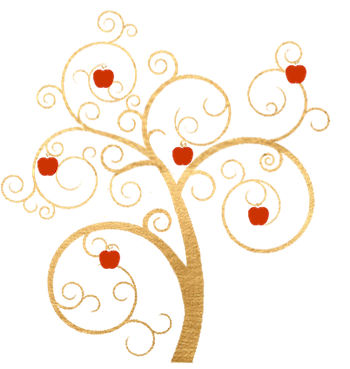
 food
food